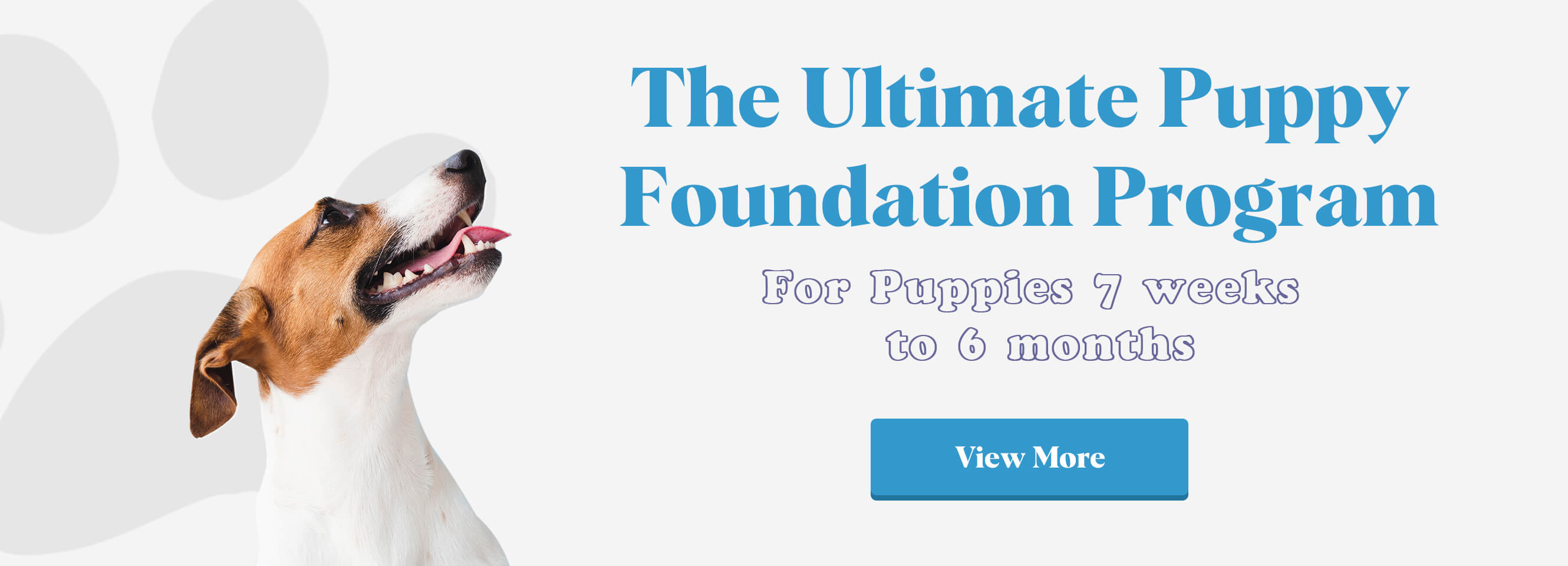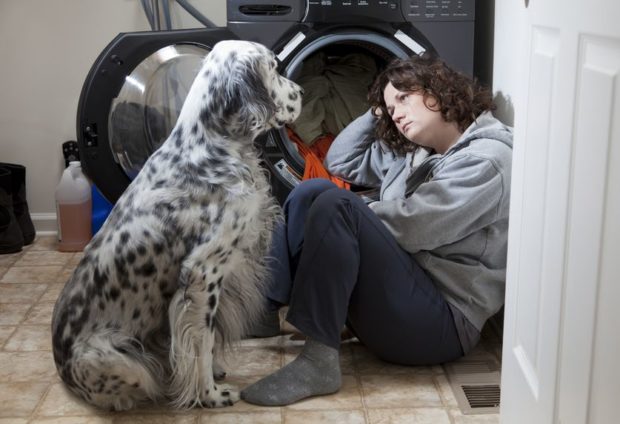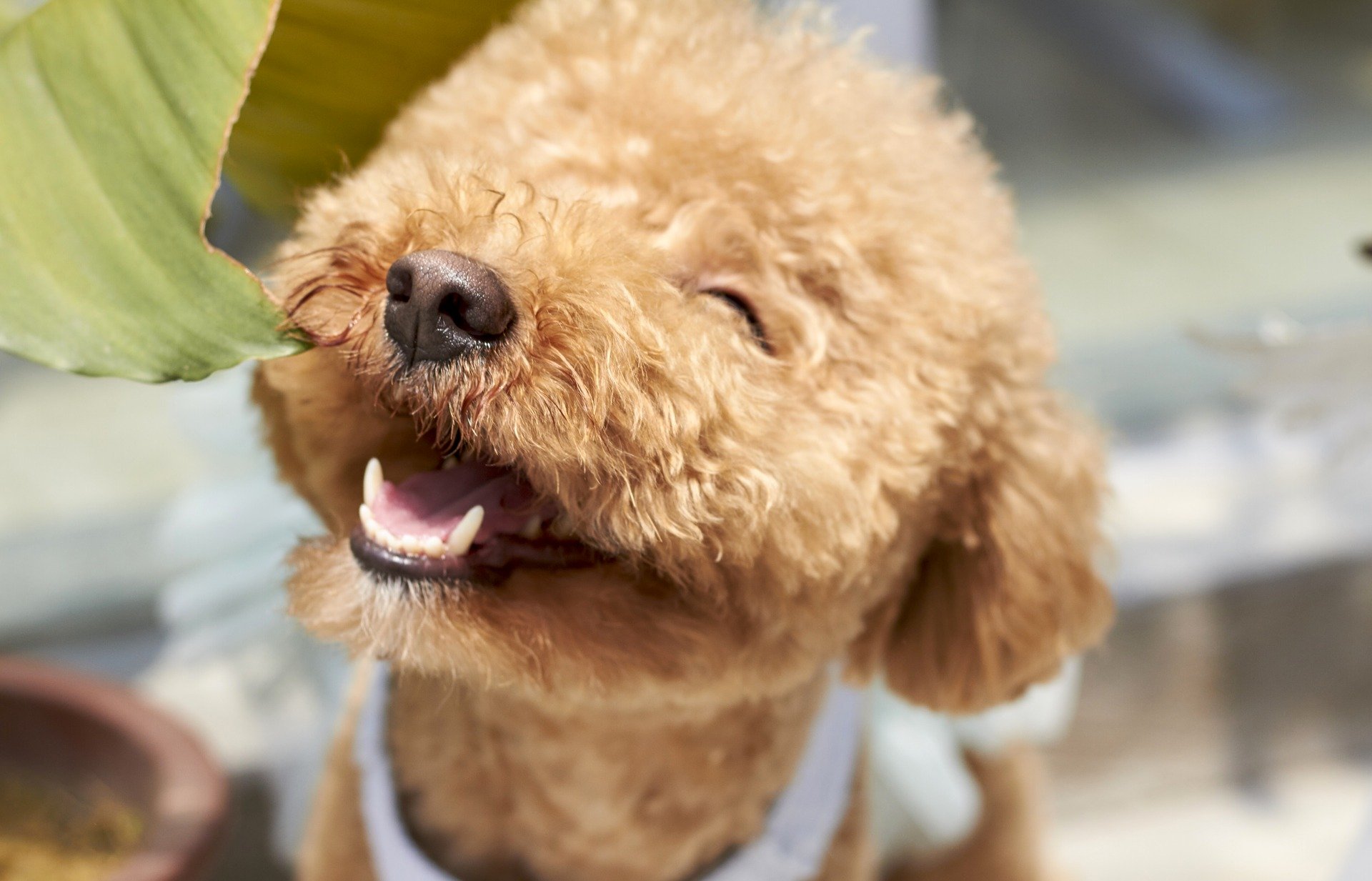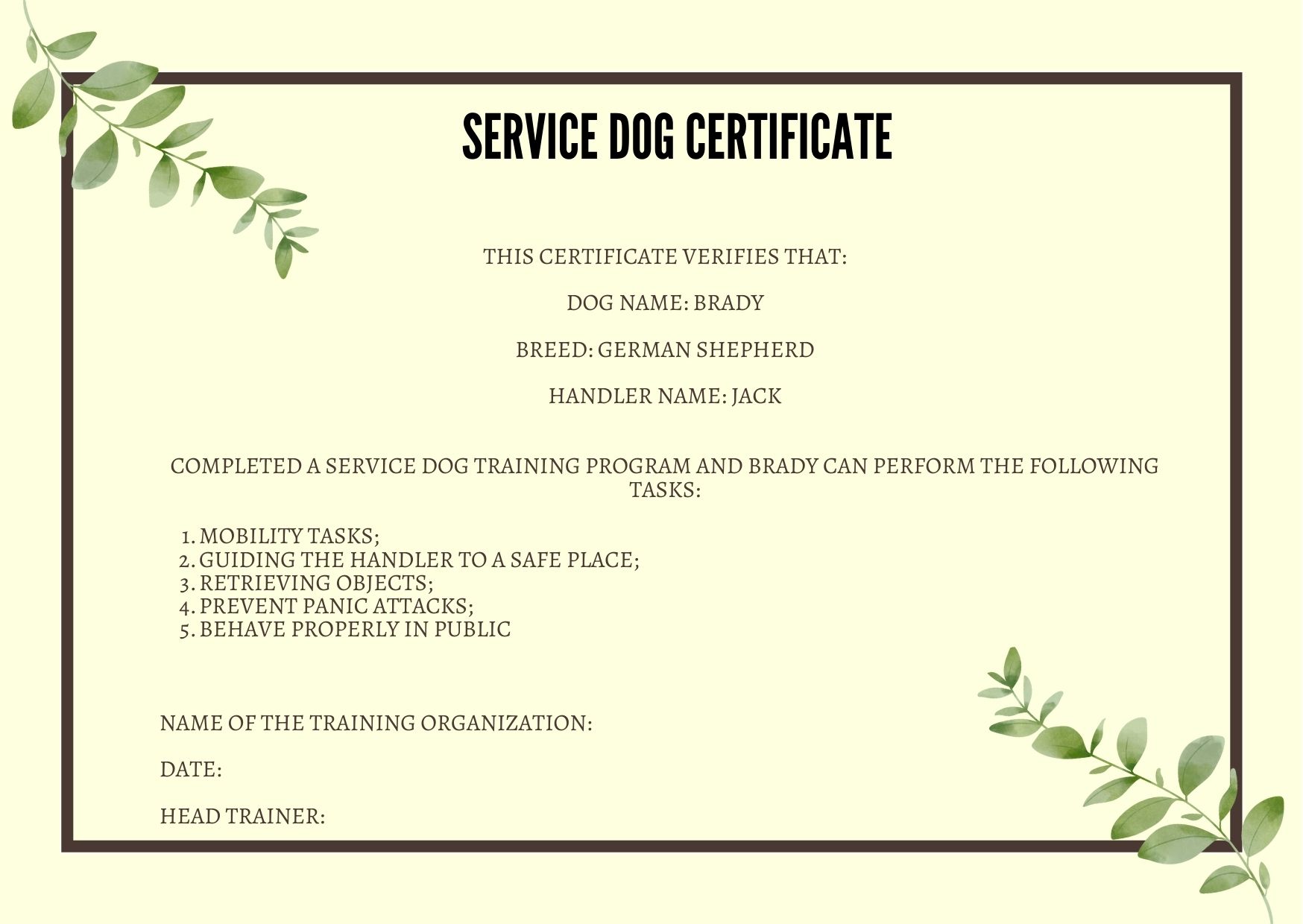
Many states have laws or regulations in regard to the minimum age a puppy must be before it can be offered for sale or adoption. As a general rule, a puppy must be at least 8 weeks old to be able to go to its new home.
Despite these regulations, you may find yourself in a situation where you need to take care of a pup, younger than 8 weeks. In order to make this experience more pleasant and less stressful for both you and your pup, we will give you some tips on what to expect and how to take care of a pup under the age of 8 weeks.

Puppy- Week 1- What to Know
During the first week of their lives, puppies are totally reliant on their mothers. The puppy’s mother does not only ensure that her puppies will be fed, but she also keeps them warm through her body, which is essential for their survival. At the age of 1 week puppies can neither see nor hear, which makes them fully dependable. During this stage of their lives, they spend most of the time sleeping or eating in order to gain weight and properly develop.
If you are helping a puppy’s mother to raise her pedigree, you need to provide them with a safe environment. You will need to set up a designated area for the litter and the mother and try to create a den for them to feel safe. You can use a box, a crate, or anything that may help you set up an enclosed space. It should be large enough so that the mother feels comfortable, but not too large so that the pups remain close to her. Also, it should have a threshold, that is low enough so that the mother can step out but high enough so that puppies can not go outside.
If you are in a situation where you have to take care of a puppy who has lost its mother or otherwise has been separated from her at this age, you will need to properly feed the pup. Puppies’ weight should increase by 10% on a daily basis, which means that by the end of the first week, their birth weight should have doubled. It is important that you do not feed the pup with milk from your fridge or use formulas made for humans. We would recommend that you look for a milk replacer, as it is high in nutrients and proteins and superior to regular milk. Of course, the best option would be to feed the pup with mother’s milk. Colostrum (the milk produced by the mother's mammary glands during the first days after birth) is essential for the normal function of the pup’s immune system. Thanks to Colostrum, which is high in protein pups are protected from disease.
According to resources, you can also make a puppy’s milk replacer at home by adding:
-10 ounces / 296 ml evaporated milk
-3 ounces / 89 ml water
-1/2 teaspoon light corn syrup
-1 cup full-fat yogurt
or
-12 ounces / 355 ml of fresh goat's milk
-1 raw egg yolk
-1 teaspoon mayonnaise
-1 teaspoon light corn syrup
-1 cup full-fat yogurt
You should keep in mind that you should not feed your pup cow’s milk.
You should remember to feed your puppy every two to three hours, around the clock. Usually 6-8 meals, within 24, are sufficient for most pups; if your pup is too weak, you may need to feed it more often.
An essential part of taking care of a pup, who has lost its mother is keeping it warm. You may want to consider using a heat lamp or thermostat. We would recommend that you check with a veterinarian what the most suitable temperature for the pup would be. It is usually recommended that the whelping box is heated up to 85°F-90°F / 29°C-32°C during the first week of the pup’s life. Gradually you can start reducing the temperature during the next weeks, i.e. reduce it to 80°F / 27°C by next week until it gets to the level of room temperature.
Puppy- Week 2- What to Know
During this time, the pup’s eyes will start to open and their hearing skills will start to develop as well. Of course, they will not be able to see and hear as clearly as they will as adults, but they will be able to recognize at least vibrations and differentiate between light and darkness. You should not force your pup to open its eyes or make it move more than it can, as it can get easily injured. Puppies will also start making slight movements. You may also notice that the coloration of their cute pink noses has started changing a bit and becomes darker.
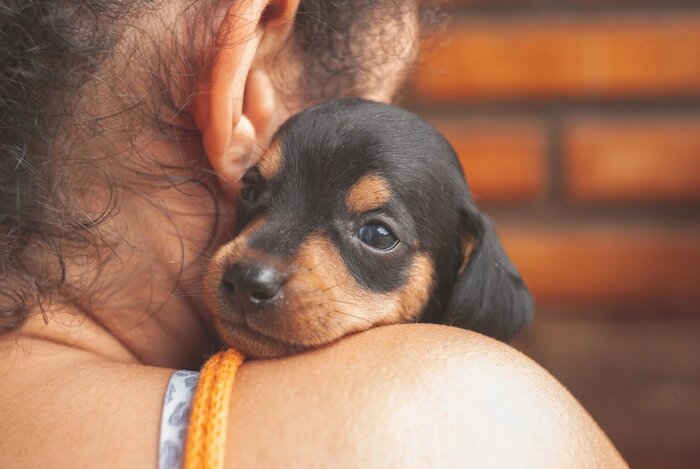
Puppy- Week 3- What to Know
The age of 3 weeks is considered “safe” for owners to pick up the pup. This scenario is valid for puppies who live with their mother. At this age, the pups’ mothers are likely to not be so protective towards their litter and allow you to pick up the pups. It is crucial to remember, that the pups’ bone structure has not developed yet, so you should be very gentle. Also, you should always keep them close to their mother, so that they are within her sight.
At the age of 3 weeks, pups will start exploring the world, as their legs should have strengthened enough to support their weight. You can expect your pup to play and explore around. That is why it is important that you make your home as safe for the pup as possible to avoid any potentially dangerous situations that may occur.
At about the age of 3 weeks, you can expect teething to begin. This process is related to discomfort and pain during eating, so you may want to provide your paw friend with chew toys and sticks safe for dogs.
Weaning is also likely to start during this stage of the pup’s life, which will reduce the pressure on the mother and she will recover. At the age of 3.5 – 4 weeks, the transition to solid food may start. This should be conducted gradually, and it should start with including a milk replacer in your pup’s food (it should be soaked in water). You should gently wet your pup’s nose until it learns to drink. It may take about 1-3 days for a pup to learn to start drinking.
Puppy- Week 4- What to Know
During this stage, you can keep introducing solid food, including canned food and kibble, soaked in water or milk replacer, by gradually reducing the amount of milk. Kibble should be soft enough so that your pup feels comfortable during eating. You can blend them, add warm water to them and let them soak in it for about an hour prior to feeding the pup.
If you are taking care of more than one pup, it is recommended that you feed them in separate food bowls. That way you will be able to keep track of the amount of food they consume, and also be able to prevent the pups from fighting for food. Pups who had to fight for their food, tend to become more protective toward food when entering maturity.
You should keep monitoring how much weight your pup gains. Small breed representatives are likely to gain about 0.5 ounces a week, while large breeds are expected to gain 2.5 ounces per week. If you notice that your pup does not gain weight, you should consult a veterinarian.
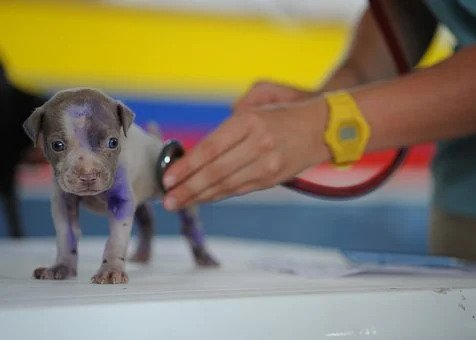
Puppy- Week 5- What to Know
Even if you still may want to soften your pup’s food, it should be able to eat commercial food.
During this stage, puppies are able to relieve themselves on their own, without needing any stimulation from their mother. The mother will spend more time on her own, instead of being with the pups. She may still feed them occasionally for short periods of time until they are fully weaned. Also, the mother will teach them during this stage to not bite. More active socialization with the family members will begin and pups will get familiar with new sights, sounds, and smells present in their environment. Proper and regular interaction with family members will help your pup turn into a confident and well-behaved adult.
Keep monitoring your pup in order to determine if it develops properly. At this age, pups are still very vulnerable and can easily get sick. Also, you should not bring your pup outside and let it meet other animals, as it has not been vaccinated yet.
Puppy- Week 6- What to Know
At the age of 6 weeks, you may consider contacting a veterinarian and arranging an appointment. Usually, the first vaccination shots for Distemper and Parvovirus are made at the age of 6-8 weeks. The sooner you make a vaccination schedule, the sooner you will be able to take your pup outside and start the process of socialization. Also, based on your location the vet will give you advice on what additional vaccines might be needed.
You may want to consider starting potty training your pup. However, you should remember that pups still can not hold their bladders and this “training” will include only the very basics. You should not expect perfect results. While teaching your pup the foundation of housebreaking, you should monitor its behavior and appearance- is it scratching its skin, does it look healthy or it is too weak...etc., and consult a veterinarian as needed.
During this stage, you may need to use pee pads and put them in a designated area at home to avoid any house incidents. Praise and reward your little buddy when it uses the pee pad. Make the transition to going potty outside gradually, once your pup gets its first shot of vaccination.
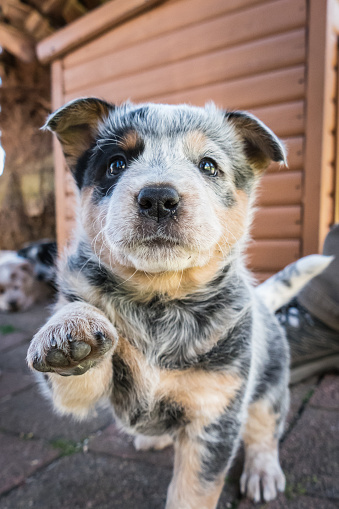
Puppy- Week 7- What to Know
Playing and socializing go further! Your pup will need more mental stimulation, so you may want to consider buying new toys. At this point, your pup is likely to have already been vaccinated or an appointment at the vet is likely to take place soon. Deworming will also be conducted and you may notice that your puppy is still pooping worms for the next 2-3 days. Side effects of vaccination/medication like temporary fatigue or diarrhea and vomiting may occur. You should monitor your pup, as these symptoms should go away within 1-2 days. The vet will also check the pup’s teeth, ears, nails, and skin. You should ask them about tips on how to keep your pup maintained at home.You can start introducing the crate, as crate training has many benefits- it will teach your pup that it has a safe zone at home, where it can rest and play uninterrupted. In order to create a positive experience for your pup, reward it every time it shows an interest in the crate. Put treats inside to make it more appealing and once your pup starts going inside on their own, you can try closing the door for several seconds, by gradually increasing the duration.
Puppy- Week 8- What to Know
At the age of 8 weeks, your pup should have received its first round of vaccinations, so you can take it outside. Since at the of 8 weeks, pups are not fully vaccinated you should avoid meeting other animals. You should make small steps, like bringing it to the backyard/garden, or to areas near your home. Do not take it to local parks yet. If you still want to show it to the world, a good idea would be to put it in its crate and take it for a ride. Your pup’s food should no longer contain milk at this point and your paw friend should be fully weaned. You can start potty training your little buddy more actively and provide it with chew toys and any toys that will mentally stimulate it.
The period up to 16 weeks of age is essential for puppies to learn new things about their surroundings. Your main goal should be to supervise your pup’s interaction with the world, try to provide it with a positive experience, and keep the interactions short. You should aim at developing a strong bond with your paw friend based on trust and care.



